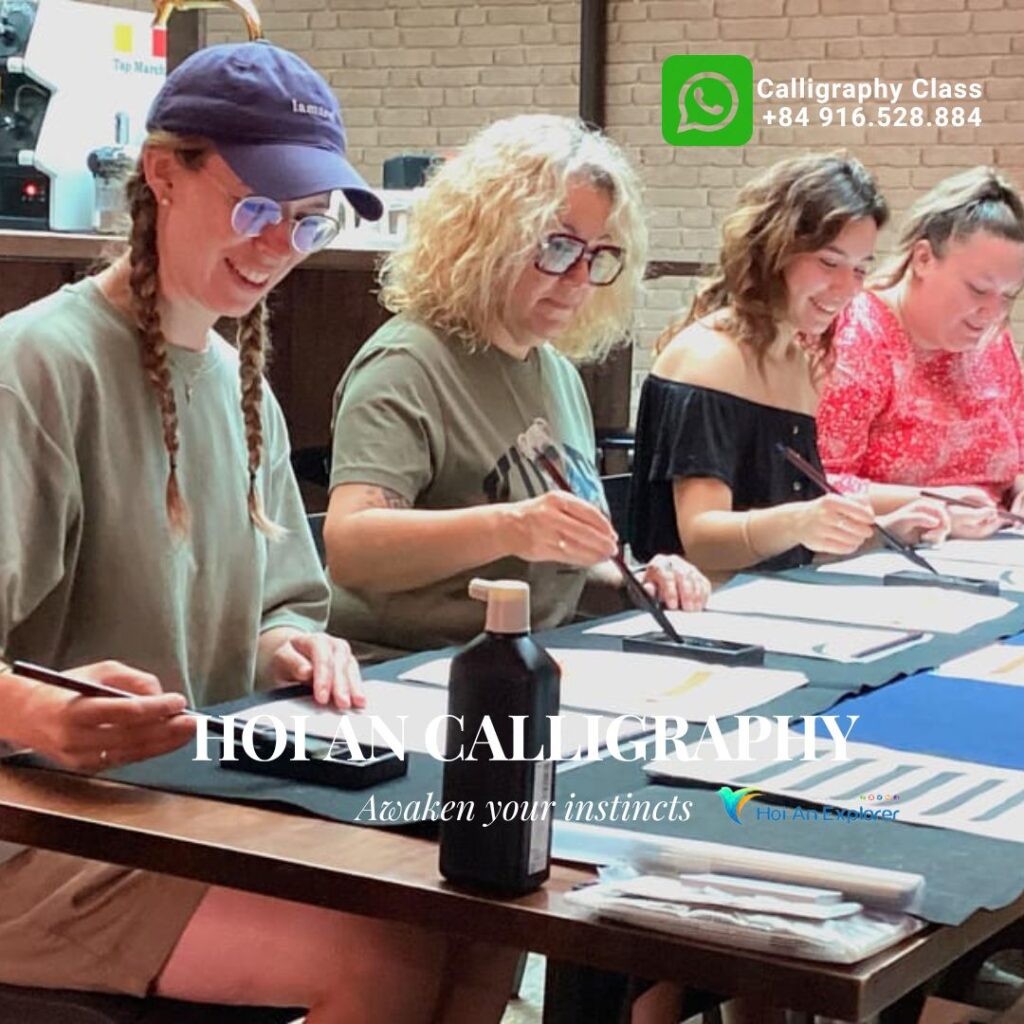How to Preserve a Piece of Calligraphy for a Lifetime
Calligraphy is more than just an art form—it is a delicate balance of ink, paper, and meaning, capturing the essence of culture and expression. Whether you’ve acquired a beautiful calligraphy piece from Hoi An or inherited a treasured artwork, proper preservation is essential to maintaining its beauty and integrity for years to come. Here are expert tips on how to care for and protect your calligraphy work.
See more details >>> The calligraphy class in Hoi An attracts international tourists.

1. Choose the Right Frame and Glass
Framing is one of the best ways to shield calligraphy from environmental damage.
-
Acid-Free Matting: Use acid-free or archival-quality mats to prevent discoloration and chemical reactions with the paper.
-
UV-Protective Glass: Opt for museum-grade glass or acrylic that blocks harmful UV rays, preventing ink from fading over time.
-
Proper Spacing: Ensure there’s space between the glass and the artwork to avoid condensation buildup, which can lead to mold growth.
2. Store in a Controlled Environment
If framing isn’t an option, storing your calligraphy piece correctly is crucial.
-
Avoid Direct Sunlight: Exposure to light accelerates fading, so place the artwork in a shaded area or dimly lit space.
-
Keep Away from Moisture: High humidity can cause paper to warp and ink to bleed. Store calligraphy in a room with a stable humidity level (around 40-50%).
-
Temperature Matters: Extreme temperatures can make ink brittle and paper fragile. Keep the artwork in a cool, dry place.
3. Use Archival Materials
Investing in archival-quality storage materials helps maintain the longevity of your calligraphy.
-
Archival Sleeves or Folders: These prevent dust accumulation and physical damage.
-
Acid-Free Tissue Paper: Place between layers of calligraphy works to avoid ink transfer and smudging.
-
Avoid Plastic Covers: Some plastics trap moisture, leading to deterioration over time.
4. Handle with Care
The oils from your hands can affect paper quality, so take precautions when handling calligraphy.
-
Wash Hands Before Handling: Always clean your hands before touching the piece.
-
Use Cotton Gloves: For valuable or antique calligraphy, wear gloves to prevent smudging and staining.
-
Support the Paper: When moving unframed pieces, use both hands to avoid creases and bends.
5. Regular Maintenance and Inspection
Preserving calligraphy is an ongoing process.
-
Dust the Frame Regularly: Use a soft, dry cloth to clean the glass and prevent buildup.
-
Check for Mold or Fading: Inspect the artwork periodically and address any early signs of deterioration.
-
Reframe if Necessary: Over time, mats and frames may degrade. Replace them with archival materials if needed.
6. Digitize for Long-Term Security
A digital copy ensures your calligraphy is preserved even if the original fades or gets damaged.
-
Scan in High Resolution: Use a professional scanner to capture fine details.
-
Store on Multiple Devices: Save the digital file in cloud storage, an external drive, or a personal archive.
-
Print a Backup Copy: If needed, create a high-quality print to display while keeping the original stored safely.
See more details >>> Experience Hoi An Calligraphy Class And Workshop At The Old Town.
A well-preserved calligraphy piece can last for generations, carrying history, emotion, and artistry through time. By following these protective measures, you can safeguard your cherished artwork and ensure that its beauty remains intact for years to come. Whether it’s a souvenir from Hoi An or a family heirloom, proper care makes all the difference in maintaining its legacy.




